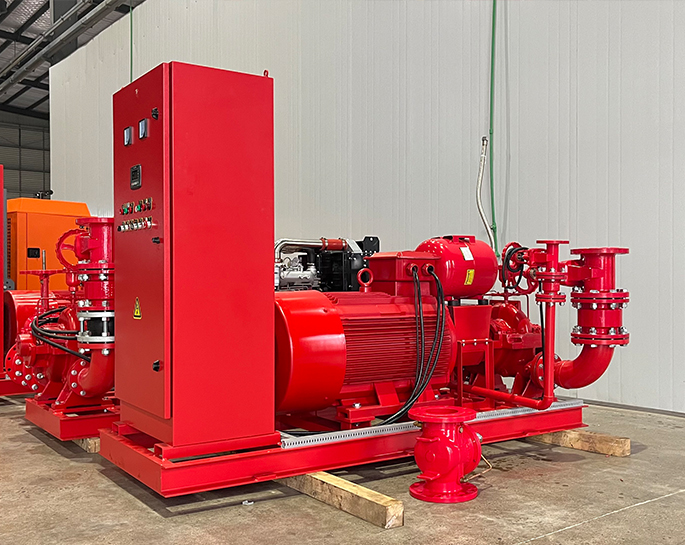While both fire pumps and booster pumps are designed to increase water pressure, they serve different purposes and are used in distinct applications. Here are the key differences between a fire pump and a booster pump:
### Fire Pump:
1. **Primary Purpose:**
- A fire pump is specifically designed for firefighting and fire protection applications. Its primary function is to ensure an adequate and reliable water supply for fire sprinkler systems, standpipes, hose reels, and other firefighting equipment.
2. **Usage in Emergency Situations:**
- Fire pumps are activated during emergency situations when a fire is detected. They provide the necessary pressure to operate fire protection systems and suppress the fire effectively.
3. **Performance Standards:**
- Fire pumps are subject to strict performance standards and regulations to ensure they can deliver water at the required pressure and flow rates during a fire emergency.
4. **Typical Power Sources:**
- Fire pumps can be powered by electric motors or diesel engines. Some systems may have both types for redundancy.
5. **Installation Requirements:**
- Fire pumps are commonly installed in buildings, especially in high-rises, where municipal water pressure may be insufficient to combat fires effectively.
### Booster Pump:
1. **General Purpose:**
- A booster pump is a general-purpose pump used to increase water pressure in various applications, such as domestic water supply, irrigation, or industrial processes. It is not specifically designed for firefighting purposes.
2. **Continuous Operation:**
- Booster pumps are typically in continuous operation to maintain consistent water pressure in a system. They are not reserved for emergency use but are regularly employed to ensure a steady water supply.
3. **Various Applications:**
- Booster pumps are used in a wide range of settings, including residential, commercial, and industrial applications, where a consistent and elevated water pressure is needed.
4. **Power Sources:**
- Booster pumps are commonly electrically driven, although they can also be powered by other sources such as gasoline or diesel engines.
5. **Installation Locations:**
- Booster pumps can be installed in a variety of locations, including pump rooms, utility spaces, or directly within the water supply system.
In summary, the main distinction lies in the intended use and application. Fire pumps are specialized systems designed specifically for firefighting and ensuring water supply during emergencies, while booster pumps are versatile pumps used to elevate water pressure for various non-emergency applications. It's crucial to select the right type of pump based on the specific requirements and regulations governing the intended use of the system.



